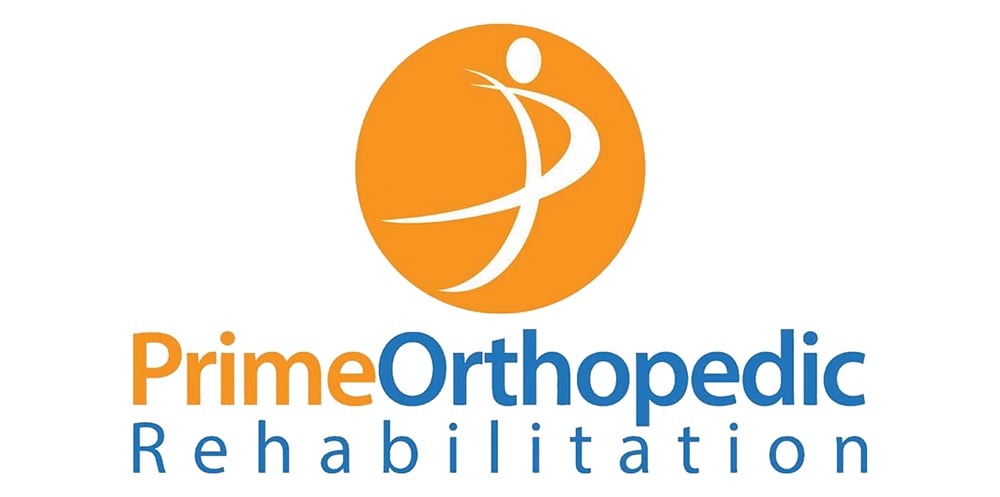
The sacroiliac joint is one of the joints in the pelvis which is formed by two bones, the sacrum and the ilium. There is a small amount of movement allowed at the SI joint, but its major function is stability. The SI Joint transfers the downward weight of standing and walking into the lower extremities.The SI joint often becomes misaligned in women due to increased loads, stresses, pelvic ligament strains, and greater instability at the SI joint due to hormonal changes versus the male pelvis. Women are 10x more likely to suffer from SI joint dysfunction/instability.
What Triggers Sacroiliac Joint Pain?
Sacroiliac pain can be aggravated with prolonged sitting or standing, standing on one leg, stair climbing, going from sit to stand, and with running. Women’s wider hips influence the amount of force required to maintain stability during everyday activities. For example, when walking, as each hip joint alternately moves forward and backward with each step, an increase in hip width causes an increased torque (Force) across the SI joint. Some other potential causes of sacroiliac pain include arthritis, traumatic injury, pregnancy and post-partum and systemic inflammatory conditions.
The hormonal changes of menstruation, pregnancy, and lactation can affect the integrity of the ligament support around the SI joint, which is why women often find the days leading up to their period are when the pain is at its worst.
The reason why pregnant and postpartum women often have SI joint dysfunction is a result in the increase of the Relaxin hormone that softens the structure of the lower spine and the pelvis, resulting in laxity in the ligaments, which leads to instability and ultimately discomfort or pain, especially in the SI joint.
What Does Sacroiliac Joint Pain Feel Like?
The signs and symptoms of SI joint pain start in the lower back and buttock, and may radiate to the lower hip, groin or upper thigh. While the pain is usually one sided, it can occur on both sides. Women may also experience numbness or tingling in the leg or a feeling of weakness in the leg.
How Can Physical Therapy Help Sacroiliac Dysfunction?
Physical therapy and exercise is typically an essential part of the treatment plan for sacroiliac joint dysfunction pain relief and recovery. At Prime Orthopedic Rehabilitation we evaluate which SI joint is dysfunctional and we treat it with a combination of manual techniques and therapeutic exercise to improve the mobility and stability of the SI joint. Once correct motion has been restored to the SI joint, a series of stretching and strengthening exercises will be prescribed to help reduce sacroiliac joint pain. These exercises will relax tense muscles and ligaments that limit natural motion at the joint. Strengthening exercises will also help to support the SI joint. Therefore, exercises will target the pelvis. as well as the abdominals, lower back, groin, hamstring and thigh.
Some exercises that would be beneficial to stabilize SI joint:
- Transverse Abdominal
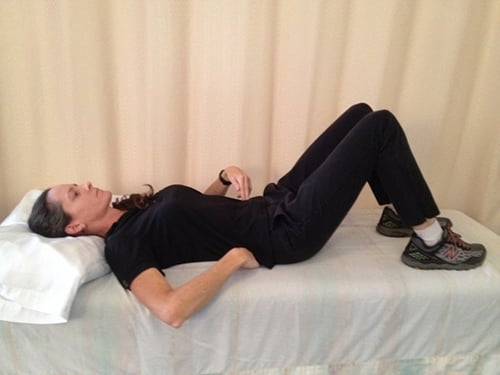
Lie on your back with knees bent. In supine with knees bent and feet flat on floor you want to activate your transverse abdominal muscle- visualize tilting your pelvis back just slightly and drawing in your belly button toward your back bone. (Basically like trying to zip up a tight pair of pants.)
You should feel the transverse ab muscle pull in and away from your fingers. Hold 5 seconds and repeat 10x.
- Clam (Hip abduction)
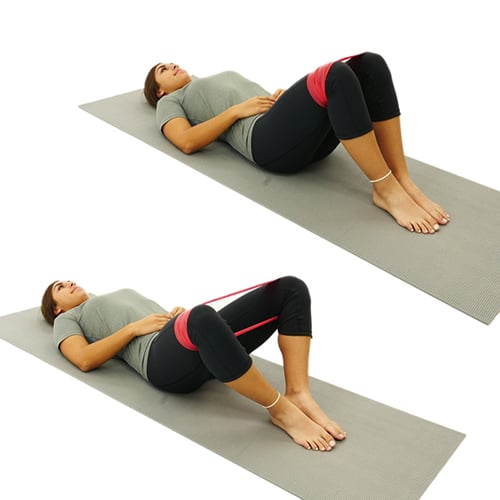
Lie on your back with knees bent. Place a resistance band around the thighs. Keeping core muscles engaged, gently separate knees apart to strengthen outer thighs and buttocks, hold for five seconds, return your knees together and repeat 10 times.
- Ball squeeze (Hip adduction)
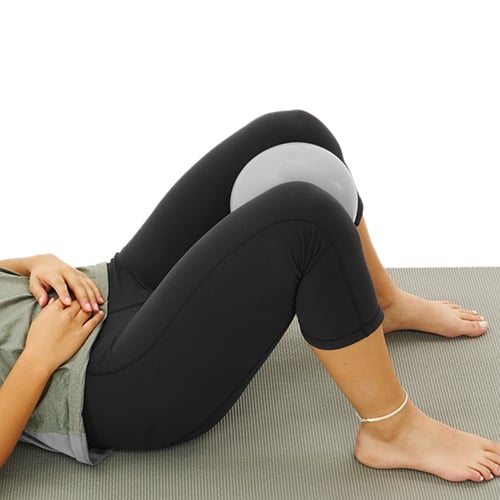
Lie on your back with knees bent. Place a ball or pillow between your knees. While keeping the core engaged, squeeze the object for five seconds, hold then release and repeat 10x.
- Bridge
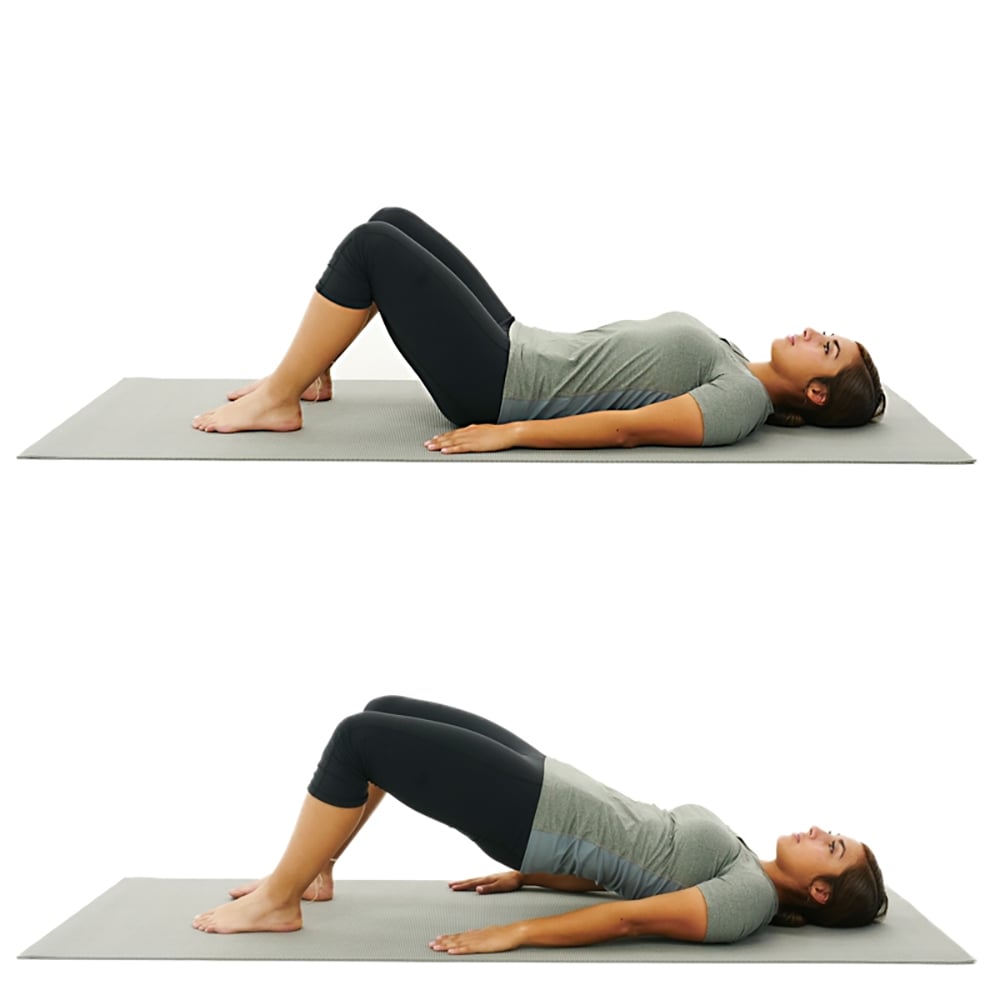
While lying on your back with knees bent, tighten your lower abdominal muscles, squeeze your buttocks and then raise your buttocks off the floor/bed as creating a “bridge” with your body. Hold for 5 seconds and then lower yourself and repeat 10 times.
If you are having difficulty with your lower back, sacroiliac joints or experiencing pelvic pain, call Prime Orthopedic Rehabilitation for an appointment at 201-503-7173.
At Prime Orthopedic Rehabilitation, we have both male and female therapists. Our therapists all hold advanced certifications to help with your specific needs, including Orthopedic Certified Specialist (OCS) certifications for orthopedic specialties, McKenzie approach for spine, Schroth Certification for Scoliosis, Graston and John Barnes techniques for Myofascial Release, Post Mastectomy therapy, as well as LSVT (BIG) for Parkinson’s treatment, Vestibular rehab for dizziness, balance and vertigo, Strength and Conditioning certifications (CSCS) for Sports Rehab, as well as therapists certified in dry needling, cupping, and instrument assisted soft tissue mobilization (IASTM). We offer general outpatient physical and occupational therapy, in both of our offices, in Tenafly and in Northvale, as well as In-Home for those patients who have a hard time leaving the house. Prime also has 73 5-star google reviews and offers more one on one time than most other offices.
Jessica Lowy, DPT, CMTPT, DN, Mckenzie 1 -4, Schroth Therapist Michal Porath, MPT Mckenzie 1 – 4 and Schroth Therapist are owners of Prime Orthopedic Rehabilitation in Tenafly. They treat posture disorders in their clinic, in addition to general orthopedic and post surgical patients. Call (201) 503-7173 for an appointment.









